For many merchants, the two platforms Jumpseller vs Shopify look like close cousins due to their similar signature green color. But in fact, beneath the surface, they take very different approaches to eCommerce.
So, which one is actually better? In this article, we're cutting through the seemingly lookalike branding and exploring their 8 key differences in terms of:
- Pricing
- Ease of Use
- Customization
- Themes
- eCommerce features
- SEO & marketing
- Apps & extensions
- Customer support
Let's get started!
Jumpseller Vs Shopify: Which To Choose?
Shopify totally takes the crown if you're looking for a winner between Jumpseller vs Shopify. The platform is packed with advanced features for customization and scalability, including headless storefronts, AI-powered automation, third-party apps, and more!
Still, let's not count Jumpseller out. Though not as feature-rich as Shopify, the platform still offers excellent value for small businesses that prioritize affordability and easy control.
Specifically, choose Jumpseller if you:
- Are just starting out and want to keep monthly costs low
- Don't want to deal with transaction fees eating into your profits
- Prefer a minimal, beginner-friendly setup without overwhelming options
- Run a small business that doesn't need deep customization or advanced features
And choose Shopify if you:
- Plan to scale your store across regions, products, and sales channels
- Want access to powerful tools for SEO, marketing, inventory, and analytics
- Need maximum control over your storefront's design, checkout, and backend logic
- Rely on third-party apps and integrations to run a high-performing business
Still on the fence? Read our full comparison below!
Need Help To Migrate to Shopify?
LitExtension provides a well-optimized All-in-One Shopify migration service.
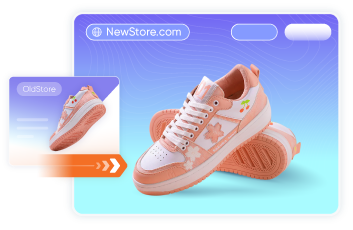
Jumpseller vs Shopify: Break Down The 8 Differences
After careful and extensive research, our team has managed to pin down the differences between Jumpseller vs Shopify across 8 key areas. The section below will shed light on each of them:
Features | Jumpseller | Shopify | Winner |
Pricing | Low cost ($11–$84), No transaction fees | Higher cost ($25–$2,300+), Transaction fees apply | Jumpseller |
Ease of Use | Simple, clean dashboard | Smooth onboarding, polished UI | Tie |
Customization | Basic, limited backend access | Full control, Shopify Functions | Shopify |
Themes | 22 free themes, outdated options | 240+ themes, modern & supported | Shopify |
eCommerce features | Basic tools, limited scalability | Advanced tools, scalable setup | Shopify |
SEO & Marketing | Manual SEO, limited automation | Automation, advanced SEO options | Shopify |
Apps & Extensions | 130+ apps, no one-click install | 13,000+ apps, curated marketplace | Shopify |
Customer support | Form-based, real-time agent reply | Extensive guides, chatbot, community | Tie |
1. Best for Pricing: Jumpseller
For starters, you must choose a platform that aligns with both your budget and your goals. Plus, aside from the monthly fee, you’ve also got to watch out for the transaction fees (if any).
So, how do Jumpseller and Shopify stack up when it comes to value for money? Let’s break it down:
Jumpseller pricing
As of this writing, Jumpseller offers four pricing tiers:
- Basic: $11/month
- Plus: $21/month
- Pro: $42/month
- Premium: $84/month
The real cherry on top is that there are no transaction fees. Ever. Basically, everything you earn stays in your pocket, no matter which plan you’re on!
Shopify pricing
Like Jumpstarter, Shopify also has four pricing plans, with detailed pricing as follows:
- Basic: $25/month
- Grow: $49/month
- Advanced: $399/month
- Plus: starting at $2,300/month
And note that unless you use Shopify Payments, transaction fees are part of the deal. These fees start at 2% (for the Basic plan) and gradually decrease as you move up the pricing ladder (1%, 0.6%, and finally 0.2%).
The Verdict
Jumpseller is the hands-down winner if you’re looking for maximum value without surprise charges. With low monthly costs and zero transaction fees, it’s clearly the more budget-friendly choice between the two.
2. Best for Ease of Use: A Tie
When launching an online store, the last thing you want is to get stuck wrestling with a clunky setup. That's why ease of use truly matters if you want to choose between Jumpseller vs Shopify:
Jumpseller ease of use
The onboarding process is simple with Jumpseller. Just click “Start trial” and type in your store's name, email, and password (no verifications needed); you're in!
Within seconds, you land on a clean, minimal dashboard with an intuitive left-hand menu that feels instantly familiar. Your 14-day free trial kicks in right away, ready for you to start exploring.

Shopify ease of use
Shopify's onboarding is similar to that of Jumpseller in most parts.
After hitting “Start Free Trial,” you'll answer a couple of quick questions about your store, then sign up using your email or social account of choice.
You'll be prompted to choose a subscription plan (but no pressure; there's a skip button if you're not ready yet!) Once you're through, you're welcomed by a sleek, well-organized dashboard with a clear menu on the left.

The Verdict
While Shopify does throw in a few more steps, it doesn't slow you down. Both platforms offer smooth, no-headache experiences designed with beginners in mind. For that reason, this round is a draw.
3. Best for Customization: Shopify
Having full control over elements like the colors, layouts, checkouts, etc., can seriously shape your brand experience and bottom line. So, when it comes to flexibility, who's the real winner between Jumpseller vs Shopify?
Jumpseller customization
With Jumpseller, you get two customization tools. One is the Visual Editor, designed for editing headers, footers, templates, and colors with a few clicks. Another is the Code Editor, which lets you go deeper using Liquid, HTML, CSS, and JavaScript.

But (and it's a big but) Jumpseller still holds back on some critical areas.
Backend access is limited, and checkout-level customizations are tightly controlled. Simply put, if you're dreaming of post-purchase upsells, dynamic checkout fields, or building a finely-tuned customer journey, you'll likely run into roadblocks. It's decent for small to medium stores, but not quite enterprise-ready!
Shopify customization
Like Jumpseller, Shopify also gives you a beginner-friendly Theme Editor plus access to code for those who want to go beyond presets. Still, we must say the best part happens behind the scenes, when you use the coding option. It gives you everything Jumpseller offers and more!
Specifically, with Shopify Functions, you can inject your own logic into Shopify's backend, such as personalized shipping rules or custom discount systems. Even better, for those who want to go headless, Shopify's Hydrogen and Oxygen stack lets developers build lightning-fast, 100% custom storefronts with React, all hosted globally.

The Verdict
If you want room to grow, experiment, and push boundaries, Shopify is in a league of its own. Jumpseller tries to cater decently to both beginners and coders, but it's Shopify that actually delivers on both fronts.
4. Best for Themes: Shopify
Your store's theme doesn't just serve as a “pretty face” but actually sets the tone for your brand. It guides your customers through their shopping experience and, in many cases, can even impact your conversions! So, when comparing Jumpseller and Shopify, you should evaluate which one gives you beautiful, attractive themes that truly make the store stand out.
Jumpseller themes
There are only 22 themes in Jumpseller's collection so far (though the great news is that they're all completely free).
Worse, once diving in, you'll notice a pattern: Many of the themes feel like slight variations of each other, mainly differing in color schemes and a few layout tweaks. Not to mention, some themes are linked to broken pages (yes, actual 404 errors), which hints that updates and maintenance for these themes have never been Jumpseller's top priority.

Shopify themes
How about Shopify?
Its selection is both modern and expansive, with over 240 themes in its arsenal (13 free, the rest priced between $100 and $500). Every template is polished, thoughtfully designed, and — even better — ready to go live with little to no editing!

There's also an intuitive filter system that lets you browse by price, popularity, and release date, so finding the perfect fit doesn't take too much of your time. And unlike Jumpseller, new Shopify themes roll out almost every few weeks, so you're never stuck with stale, outdated design options.
The Verdict
Shopify absolutely takes the crown here. Not only does it offer far more variety, but the themes are fresher, more professional, and better supported.
5. Best for eCommerce features: Shopify
Needless to say, eCommerce features serve as the foundation of your entire business! How Jumpseller vs Shopify performs in this regard determines whether your customers can shop easily and conveniently, which ultimately affects your store's long-term growth. So, without further ado, let's jump into a feature-by-feature showdown.
Inventory management
In general, Jumpseller gives you a decent start with an Inventory tab that lets you edit product quantities, SKUs, and stock limits in bulk. Quite handy during peak seasons!
Unfortunately, there's still a catch: Unless you're on the Premium plan, you're stuck managing inventory in just one location. Even Premium users only get up to four. And what about smart filters, such as color or size variants, to improve search? Again, it's exclusive to Premium users only.
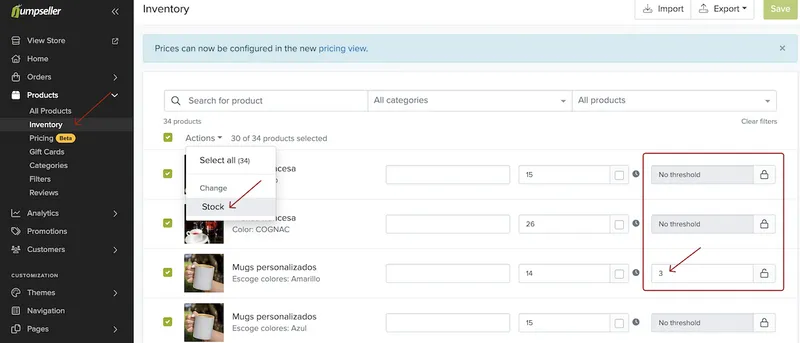
Meanwhile, Shopify, like Jumpseller, also supports bulk edits through its admin and CSV imports and lets you tweak pricing, weight, tax settings, barcodes, and more.
But here's where Shopify proves itself superior: the platform breaks down your inventory into three smaller categories — Available, Committed, or Incoming — so you always know exactly where your stock stands. Furthermore, for multi-location sellers, Shopify supports up to 10 locations on three standard plans and a jaw-dropping 200 on the Plus plan!
Payment options
When it comes to payment flexibility, Jumpseller is clearly left in the dust. This platform only supports 20+ payment gateways and totally lacks a native payment solution. In most cases, you'll likely have to set up third-party processors (and deal with their fees).
Meanwhile, Shopify gives you access to over 100 global and even comes with its own built-in processor: Shopify Payments. It's fast to set up, handles all major credit cards, and supports Apple Pay, Google Pay, Shop Pay, and more. You can even enable Shop Pay Installments, which lets U.S. and Canadian customers break up their payments while you still get paid in full upfront!
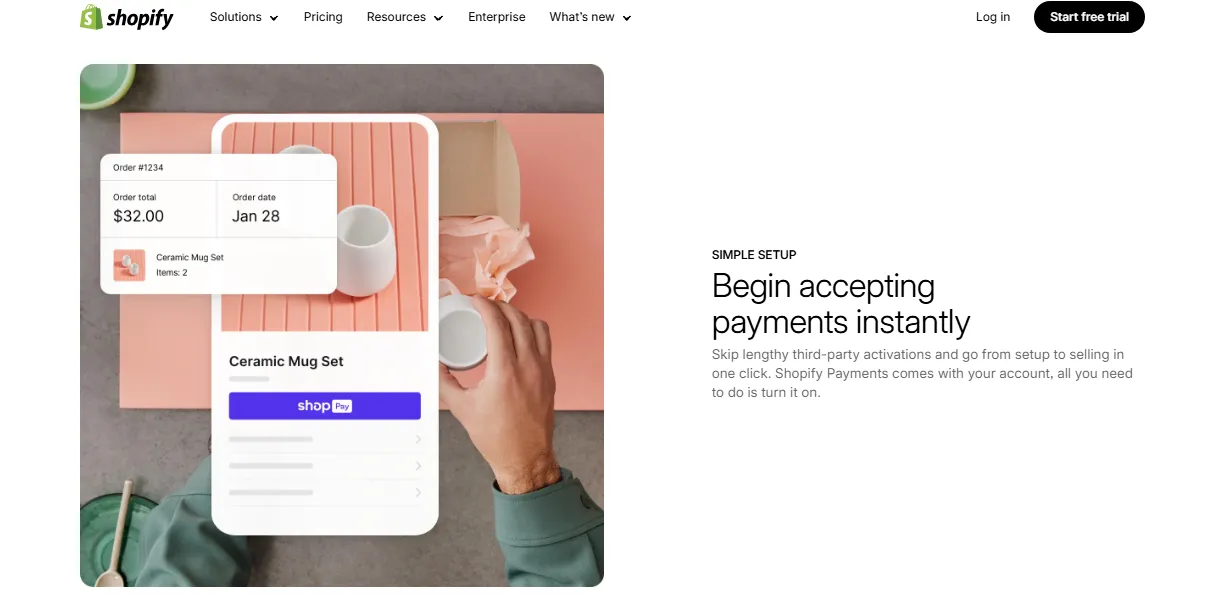
Shipping capabilities
At a glance, both platforms offer five types of shipping methods. Specifically, Jumpseller offers Free Shipping, Store Pickup, Flat Rate, External Shipping, and Shipping Rates Table. It also works with about four logistics partners as of this writing.

On the other hand, Shopify not only matches that list, but it actually expands on it! You get detailed options like price-based and weight-based flat rates, plus access to over ten major shipping carriers worldwide.
Mobile commerce
Want to run your store from your phone? The great news is that both Jumpseller vs Shopify offer mobile apps for managing orders, updating products, and staying on top of notifications.
Still, in terms of performance and reliability, Jumpseller's app suffers from extremely slow development, and there are months between its updates. These recurring bugs can make store management a headache! Meanwhile, quite the contrary, Shopify updates its app 4–5 times a month to keep everything smooth and responsive.

The Verdict
There's no sugar-coating it; Shopify outperforms Jumpseller in every key area. It offers more powerful inventory tools, greater payment flexibility, stronger shipping integrations, and a smoother mobile experience.
6. Best for SEO & marketing: Shopify
Building a stunning store is only half the battle. Without strong SEO and effective marketing tools, your store risks becoming a hidden gem no one ever discovers! In this section, we will tell you how Jumpseller vs Shopify stack up in these two critical areas:
Jumpseller SEO and marketing
Jumpseller gives you a set of key marketing features, including:
- Automating key interactions (e.g., welcoming new customers, sending reminders for abandoned carts, or following up after a purchase)
- Launching promotional campaigns with special offers like discounts, free shipping, or BOGO deals.
- Digital gift cards, which can be issued to boost gifting and retention
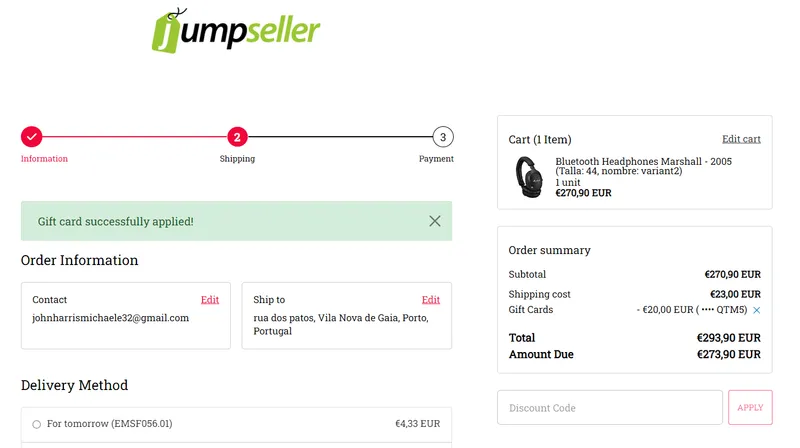
However, remember that most of these advanced features aren't fully unlocked unless you're on a higher-tier plan. For example, gift cards are only available if you're a Premium user. So, unless you feel ready to upgrade, you might find your marketing reach a bit limited.
SEO-wise, Jumpseller sticks to the basics. You can edit meta tags, fine-tune your URLs, and target specific keywords — but everything is manual. There's no built-in automation or advanced control like some other platforms.
Shopify SEO and marketing
Meanwhile, Shopify hands you the whole marketing toolbox and then some! Even on the most basic plan, you'll get access to:
- Unlimited contacts
- Customer segmentation
- Shopify Email (complete with 10,000 free emails per month and ready-to-go templates).
- Shopify Forms (for capturing leads directly on your site).
- Shopify Inbox. which allows live chat and automated responses for real-time conversions
- Marketing automation
- Abandoned checkout recovery
- Gift cards and discount codes
On the SEO front, Shopify is equally well-equipped. It offers clean and structured URLs, auto-generates important files like sitemap.xml and robots.txt, and even allows advanced users to customize the robots.txt.liquid file. That means you can fine-tune what gets indexed, block certain bots, or add custom sitemap links — all without leaving the Shopify dashboard!
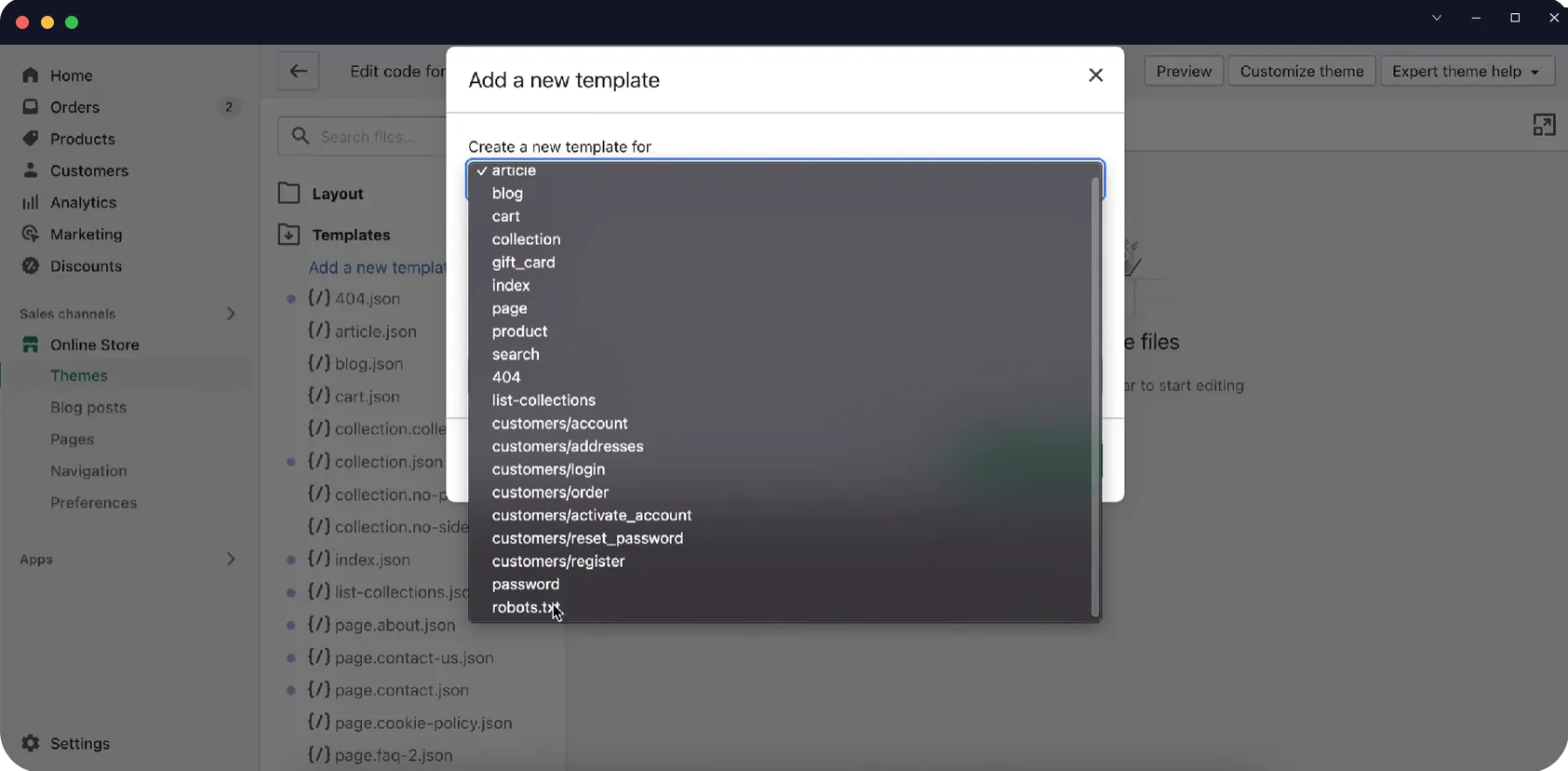
The Verdict
Jumpseller may give you a good starting point with essential tools and marketing automation, but Shopify offers much more without excessive plan-based limitations. Hence, between the two platforms, Shopify is the one to beat.
7. Best for Apps & extensions: Shopify
What if your needs and scalability requirements go beyond what the core features can cover? That's where apps and extensions come in to fill in the gaps. Simply put, the ecosystem of Jumpseller vs Shopify determines how far you can stretch, scale, and specialize without reinventing the wheel:
Jumpseller apps & extensions
So far, Jumpseller offers just over 130 apps, an extremely modest selection by any standard.
Worse, what really holds it back is the clunky installation process: there's no “one-click” install button here! If you want to add an app to your store (say, the Olak live chat tool), you'll need to leave Jumpseller, head over to Olak's website, and set things up manually.
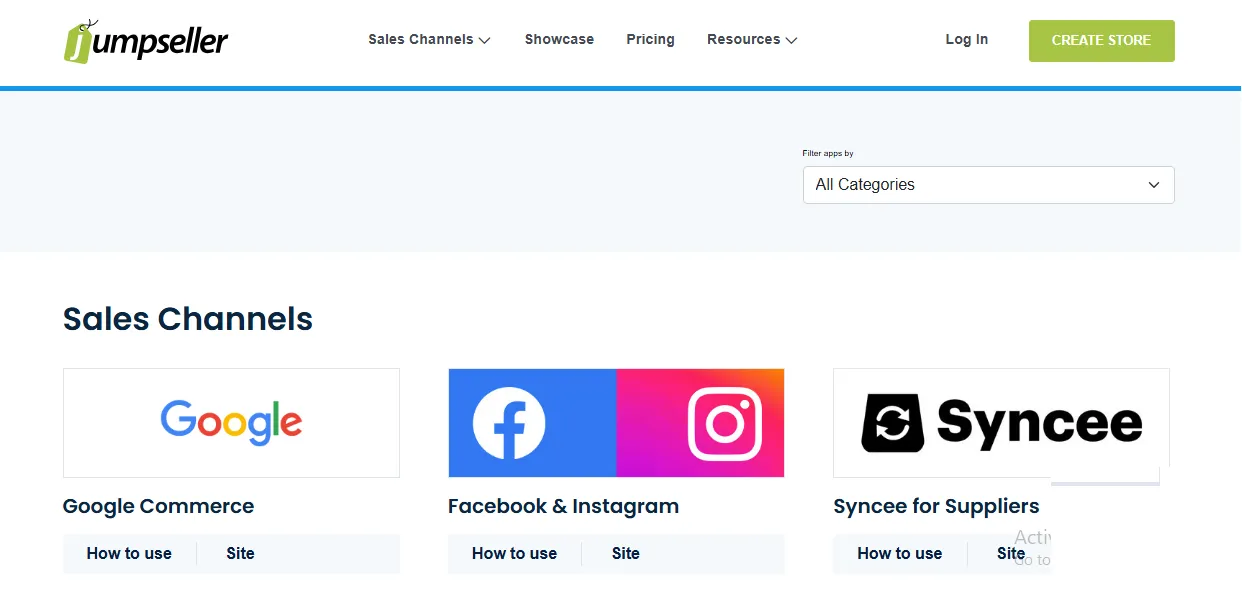
On top of that, app discovery isn't exactly a breeze either. The filter system only lets you browse by category, so finding exactly what you need can feel like searching for a needle in a haystack sometimes.
Shopify apps & extensions
Shopify, in contrast, offers a massive advantage with over 13,000 apps! Each one comes with a full breakdown: clear introductions, star ratings, user reviews, and (most importantly) a direct install button for quick integration.
Better yet, Shopify even helps you discover new apps effortlessly with curated sections like “Trending this month” and “Popular with stores like yours.” Hence, instead of mindless, confused browsing, you're now being guided to the most relevant, high-performing tools for your store!
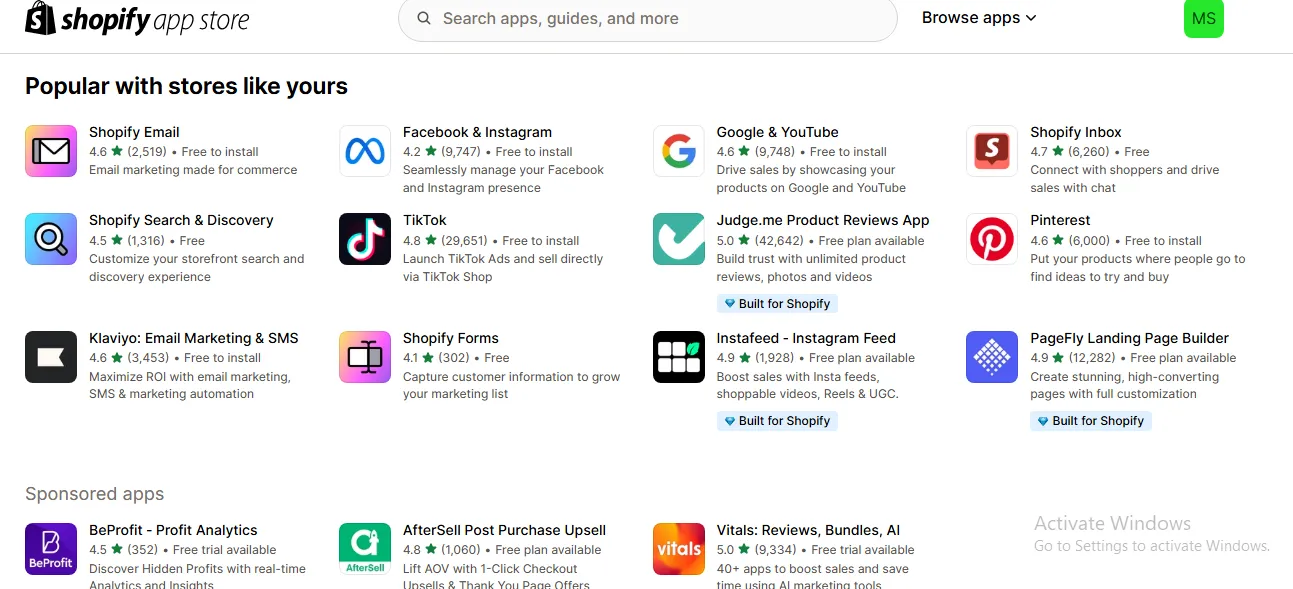
The Verdict
Shopify is truly the winner here. Thanks to its huge app collection and intelligent app discovery, store owners are given incredible flexibility and firepower to scale fast and smart. Jumpseller simply can't keep up!
8. Best for Customer support: A Tie
Lastly, when your store hits a snag (or you’re stuck on technical problems), quick and reliable support can save you time, stress, and even sales! All in all, how the Jumpseller vs Shopify support system works — and how easy it is to actually get help — matters more than you might think.
Jumpseller customer support
For Jumpseller, you can simply browse their Help Center for quick answers.
But what if you actually need to talk to an agent or customer support staff? No problem; just fill out a form right from your dashboard or send a tweet on X tagging @Jumpseller. Their team usually replies pretty fast during regular business hours (9 a.m. to 6 p.m.), so you’re not left hanging when real issues arise.
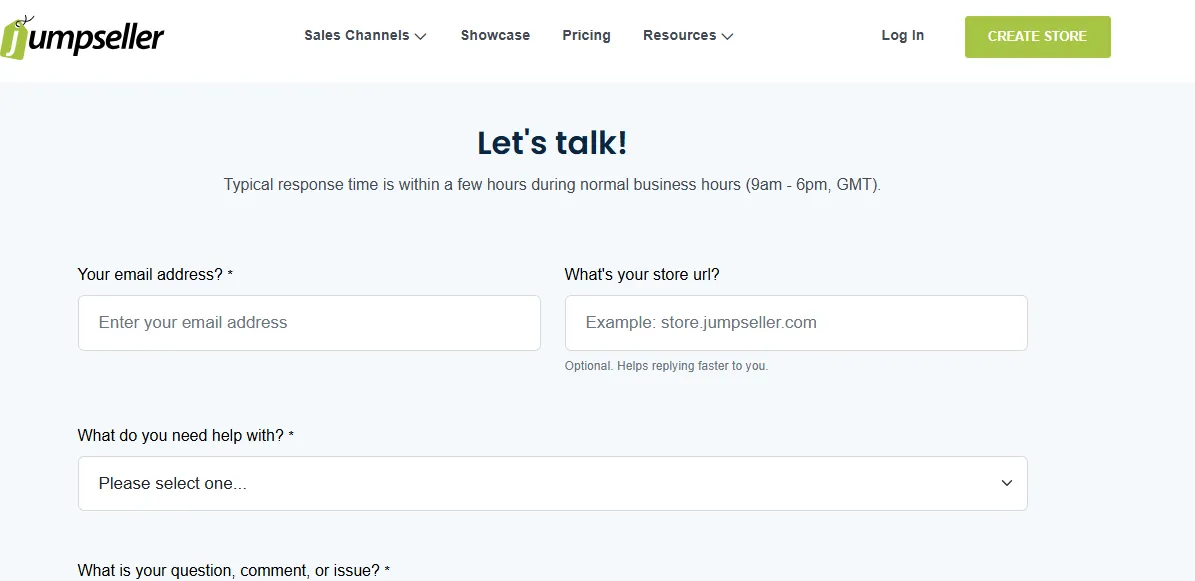
Shopify customer support
On the other hand, Shopify takes a more self-service route. Their Help Center is packed with how-tos, tutorials, troubleshooting guides, and more. You also get access to the Shopify Community and over 80 courses via Shopify Academy. There’s even a chatbot to walk you through common problems!

When none of that solves your issue, your remaining solution is hiring a Shopify Expert, but keep in mind that this usually comes with a price tag. Unfortunately, Shopify doesn’t offer direct support via phone or email.
The Verdict
Shopify clearly excels in learning resources and DIY support, but Jumpseller has the edge if you value real-time help from real people. So, in the end, it’s a tie, though there’s definitely room for improvement for both. Starting with phone and email support could make all the difference in a crisis!
Jumpseller vs Shopify: FAQs
Is Shopify still the best eCommerce platform?
Yes, Shopify continues to be one of the best — if not the best — eCommerce platforms in 2025. Its unmatched flexibility and massive app ecosystem make it an excellent choice for everyone from solo entrepreneurs to global brands.
What's the difference between Jumpseller and Shopify?
Their biggest differences lie in scale and customization. Jumpseller is more affordable and beginner-friendly (not to mention zero transaction fees), but it lacks advanced features and a large app store. Shopify, on the other hand, offers extensive third-party integrations and powerful backend tools but comes at a higher cost.
Should I sell on Jumpseller or Shopify?
It depends on your goals. Choose Jumpseller if you're running a small shop and want easy store management without technical fuss. On the other end, go with Shopify if you're aiming to build and grow a fully customized shopping experience that can scale with your business.
Final Words
And that's a wrap for our detailed Jumpseller vs Shopify breakdown!
While Jumpseller holds its ground in a few areas, Shopify clearly dominates where it counts most: customization, features, scalability, and long-term growth.
So, if you're ready to take your store to the next level, there's never been a better time to make the move. Better yet, with LitExtension, the Shopify migration couldn't be easier. Backed by 12+ years of experience working for over 300,000 stores, we'll handle all the heavy lifting so you can focus on what truly matters: growing your brand on this #1 eCommerce platform!
For more information, check out our Shopify guide and join our Facebook Community.

